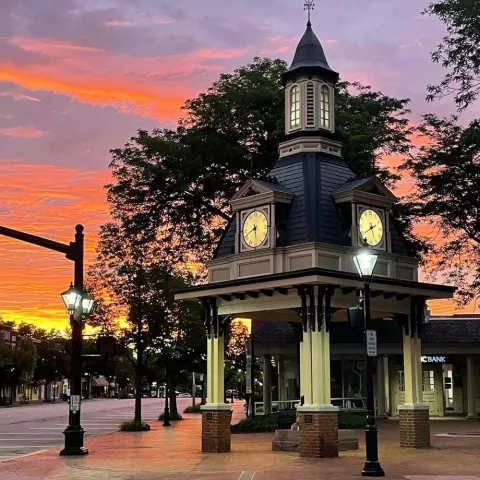Beaver
Nestled at the confluence of the Beaver and Ohio Rivers, Beaver Borough has been a crossroads of politics, architecture, and frontier legacy since the dawn of the 19th century.
The Beaver area has been inhabited since prehistoric times. Archaeologists have identified a nearby prehistoric site (36-BV-259), suggesting that Beaver's story may begin far before the arrival of European settlers.
Beaver was the site of Fort McIntosh, a key outpost during the Revolutionary War. Though nearly forgotten by the late 1800s, extensive excavations in the 1970s revealed stone foundations, hearths, and more than 80,000 artifacts. Today, a portion of the fort is visible, whispering stories of early American resilience, while the rest lies beneath River Road and neighborhood homes.
Beaver County's story began in 1800, when court was first held in Judge Abner Lacock's humble tavern—long gone now, but once the pulse of civic life. As the county grew, so did its courthouses: the first permanent one rose in 1804 on what's now Quay Square, followed by successors in 1810 and 1877. Although these structures no longer stand, the current Art Deco courthouse, built in 1933 after a fire, remains a centerpiece of downtown and the Historic District.
Nearby, the 1859 Beaver County Jail remains an arresting sight. Designed in the Italian Villa style, this sandstone building once blended into a residential backdrop with unexpected elegance. It was no ordinary fortress—Beaver's hallmark was civic pride that made even its jail feel like part of the neighborhood.
Just steps away, Beaver Borough Hall (1912) continues its role as the borough's administrative home. This Neo-Classical Revival gem—originally housing the police, fire, and municipal offices—still serves the town and stands proudly in the heart of the Third Street commercial district.
Beaver was also home to one of Pennsylvania's most formidable political figures: Matthew Stanley Quay. After moving here in 1840, Quay's rise was meteoric—from Civil War hero and Medal of Honor recipient to U.S. Senator and national political strategist. His College Avenue home, a National Historic Landmark, serves as a poignant reminder of Beaver's quiet influence on American politics.
Beaver Borough has a 317-acre National Register Historic District that is both pedestrian— and bike-friendly. It is noted for its top-rated schools, vibrant and convenient downtown shopping, wide tree-lined streets, well-maintained homes, and an award-winning history museum.


